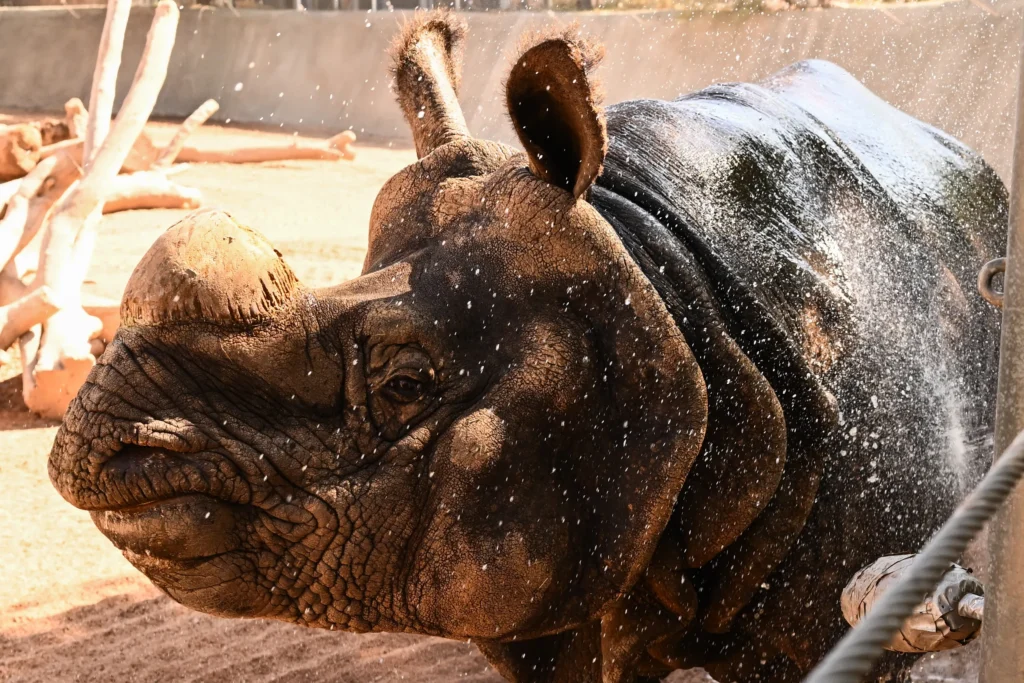As global temperatures continue to rise, the impact on wildlife has become a significant concern for zoologists and conservationists worldwide. Zoos, which play a crucial role in the preservation and care of various animal species, are facing unprecedented challenges brought on by intense heat waves. In response, many zoos have adopted innovative cooling techniques and new measures to ensure the welfare of the animals in their care.
Zoos Implement Innovative Cooling Techniques for Animals
Zoos worldwide are increasingly turning to creative solutions to help animals beat the heat. One popular method is the installation of misting systems, which provide a fine spray of water throughout enclosures. These systems are particularly effective for species that thrive in humid environments, like primates and tropical birds. The fine mist not only cools the air but also helps to maintain the moisture levels in habitats, making the environment more comfortable for the animals.
Another innovative cooling technique involves the use of ice treats and frozen enrichment items. Zookeepers prepare ice blocks filled with fruits, vegetables, and even meat, depending on the dietary needs of the animals. These frozen treats serve a dual purpose: they provide a cooling effect and stimulate natural foraging behaviors, keeping the animals mentally and physically engaged. Polar bears, big cats, and elephants are just a few of the species that benefit from these icy delights.
In addition to misting systems and ice treats, zoos are also investing in shaded structures and air-conditioned indoor spaces. These areas serve as retreats for animals when outdoor conditions become unbearable. For instance, many zoos have constructed shaded canopies, pergolas, and shelters within enclosures to offer respite from direct sunlight. Air-conditioned spaces provide a controlled environment, particularly for species that are highly sensitive to heat, such as snow leopards and red pandas.
New Measures Ensure Animal Welfare During Heat Wave
The escalating frequency of heat waves has prompted zoos to implement comprehensive measures to ensure the welfare of their inhabitants. One of the key strategies is the adjustment of feeding schedules to cooler parts of the day. By offering meals in the early morning or late afternoon, zookeepers can limit the animals’ exposure to peak temperatures while also encouraging natural feeding patterns seen in wild counterparts.
Hydration is another critical focus during heat waves. Zoos have increased the availability of fresh, clean water throughout their facilities. Many have installed additional water stations and automated water dispensers to ensure animals always have access to hydration. For aquatic animals, water quality and temperature are meticulously monitored to prevent the water from becoming too warm, which could stress the inhabitants.
Behavioral monitoring has also gained importance in heat wave management. Zoos employ teams of veterinarians and animal behaviorists to closely observe the animals for any signs of heat stress, such as lethargy, excessive panting, or abnormal behavior. By keeping a close watch, zookeepers can intervene promptly, providing necessary medical care or moving the animals to cooler environments as needed. These proactive measures are crucial in safeguarding the health and well-being of zoo animals during extreme weather conditions.
As heat waves become more frequent and severe, zoos have risen to the challenge by adopting a range of innovative cooling techniques and welfare measures. These efforts not only ensure the comfort and health of the animals but also highlight the vital role that zoos play in wildlife conservation and education. By continually evolving their strategies, zoos demonstrate their commitment to providing safe and enriching environments for their inhabitants, regardless of the weather.









